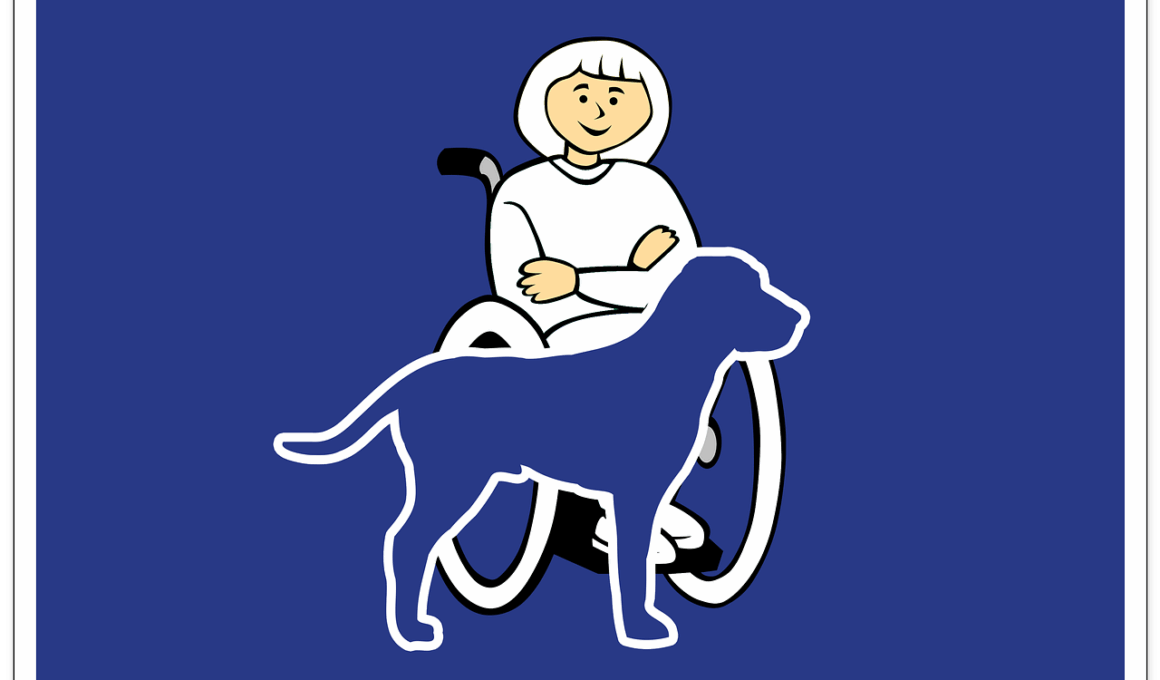Understanding the Basics of Training Dogs with Special Needs
Training a dog with special needs presents unique challenges, but it can also be incredibly rewarding. Special needs dogs may include those with physical disabilities, behavioral issues, or sensory impairments. These dogs require extra patience and understanding from their trainers. One essential aspect of training is realizing that every dog learns at its own pace. For example, a dog that is deaf may not respond to verbal commands but can be trained using visual signals. Consistency is key; using hand signals combined with positive reinforcement ensures that the dog understands what is expected of it. Creating a calm environment minimizes distractions for the dog, allowing them to focus better. Moreover, it is crucial to celebrate small victories, as these will encourage the dog and strengthen your bond. Seek advice from professionals, such as certified dog trainers, who have experience working with special needs animals. They can provide guidance tailored to the specific challenges you face. Always remember that building trust takes time, so be patient and understanding as you embark on this rewarding journey.
In addition to the training environment, selecting the right tools can significantly impact the training process for dogs with special needs. Harnesses or gentle leaders can help manage a dog’s movements while avoiding the discomfort associated with traditional collars. Further adjusting tools, such as clickers for positive reinforcement, can make a powerful difference. Incorporating engaging toys during training sessions can maintain the dog’s interest and encourage active participation. Dogs facing mobility challenges may enjoy toys that allow for minimal movement yet still stimulate their minds. Enrichment activities such as puzzle toys can also provide mental stimulation. Each dog is unique and may respond differently to various methods. Observing your dog’s reactions helps determine the most effective approach. When working with service or therapy dogs for special needs individuals, establishing a strong foundation of trust is even more critical. Successful training ensures that these dogs can assist their handlers appropriately. The human-animal bond formed through this process enhances not only the dog’s skills but also improves the overall quality of life for everyone involved. Ultimately, fostering a strong emotional connection is vital.
Tips for Training Dogs with Behavioral Issues
Behavioral issues can manifest in various forms, such as anxiety, aggression, and fearfulness. Addressing these challenges requires a tailored plan that accommodates the dog’s specific needs. Firstly, it is essential to identify the underlying cause of the behavior. For instance, anxiety may arise from past trauma or lack of socialization. Training sessions should focus on confidence-building exercises, gradually introducing the dog to new experiences at their comfortable pace. Positive reinforcement techniques encourage desired behaviors while minimizing negative ones. For example, rewarding your dog with treats or praise when they exhibit calm behavior can reinforce that mindset. Additionally, incorporating structured routines provides a sense of stability, which is especially beneficial for special needs dogs. Routines help dogs feel secure, reducing anxiety levels during training sessions. If aggression is a problem, seeking the assistance of a professional trainer is highly advisable; this behavior can pose risks and requires immediate, careful intervention. With the right support, patience, and commitment, owners can help their special needs dogs flourish, transforming obstacles into beautiful achievements.
Socialization is another critical component of training dogs with special needs. It is essential to expose them to different situations, people, and other animals safely. Gradually introducing your dog to new experiences allows them to adapt and learn appropriate responses. Always approach socialization gently, especially for dogs with heightened anxiety or fearfulness. Controlled environments, such as pet-friendly classes or supervised playdates with well-behaved dogs, can facilitate positive interactions. Working closely with trainers or behaviorists can provide tailored plans for effective socialization based on the specific needs of the dog. It’s important to observe the dog’s body language during these sessions, recognizing signs of stress or discomfort, and allowing for breaks as needed. Encouraging playtime or positive interactions serves to enhance the dog’s confidence and improve social skills over time. Also, patience is vital in this process; significant improvements might take time, and celebrating small milestones boosts your dog’s morale. Additionally, a supportive community, including other dog owners and professionals, can provide both encouragement and valuable resources to navigate the unique challenges of training special needs dogs.
Managing Physical Disabilities
Training dogs with physical disabilities necessitates a focus on their limitations and unique capabilities. Frequently, these dogs may have impairments that inhibit movement or everyday activities. In these instances, it is extremely important to adapt training methods to accommodate their specific needs. Utilizing mobility aids like wheelchairs or harnesses can assist dogs with physical challenges, allowing them to participate more fully in training. Gradual and easy exercises help maintain their physical health without adding strain or causing discomfort. For example, engaging them in light activities can strengthen their muscles and improve coordination. Implementing fun, interactive games as part of the regimen can keep training enjoyable, ensuring that dogs stay motivated. Always monitor the dog closely for any signs of discomfort or fatigue; their well-being should always be a priority. Short, frequent training sessions are often more effective than long ones, allowing for maximum retention without overwhelming the dog. Lastly, remember to involve a veterinarian or physical therapist knowledgeable about the dog’s specific disability to create a comprehensive and safe training plan that fosters their overall development.
Consistency and routine play vital roles in the training journey for dogs with special needs. Establishing a daily training schedule helps provide structure, which is especially beneficial for dogs who may thrive on predictability. Repetitive commands and actions create familiarity, allowing the dog to learn more effectively. For dogs that experience anxiety, sticking to a routine can significantly reduce their stress levels. Moreover, ensuring that training methods are consistent among different handlers is crucial. All family members or caregivers should use the same commands and rewards to prevent confusion for the dog. This consistency builds further trust and improves the learning experience. Additionally, consider incorporating fun, light-hearted playtime as part of each training session. This strategy can help maintain the dog’s interest and reinforce learning through positive experiences. Creating a supportive environment not only fosters bonding but also encourages the dog to remain engaged. Utilizing short bursts of training interspersed with relaxation can enhance focus and yield better results. Engaging in positive activities allows dogs to build their confidence and complement their training while also creating cherished memories together.
The Role of Professional Guidance
Seeking professional guidance can tremendously benefit both dogs and their owners. Specialized trainers possess skills and knowledge needed to support dogs with behavioral or physical challenges. They can create customized training plans tailored to address the specific needs of the dog, which can be invaluable for progress. Online resources and local classes led by experienced trainers can help owners gain new insight and methods applicable in everyday training. Moreover, pet professionals educate owners on effective training techniques, emphasizing patience and understanding. Collaborating with veterinary behaviorists can provide access to additional support, especially if behavioral issues are exacerbated by medical conditions. Remember to also consider group training sessions, as they allow dogs to learn social skills in a safe setting. Recognizing each dog’s distinct needs and capabilities can significantly enhance the effectiveness of the training regimen. Connecting with support communities can offer emotional encouragement to owners facing challenges. Sharing experiences and learning from one another fosters solidarity within the training journey. Ultimately, the collective effort fosters personal growth and improves the overall well-being of both dogs and their humans.
The journey of training dogs with special needs is filled with challenges, but when approached with dedication and compassion, it can lead to deeply rewarding outcomes. Those willing to invest time and effort will witness these extraordinary dogs overcoming barriers to thrive in their environment. By highlighting successes while recognizing the need for continuous learning, both animals and their humans can experience growth. Each small improvement deserves recognition, reminding owners of the remarkable potential these special dogs embody. Whether it’s mastering a new command, making a new friend, or simply taking a confident step forward, these milestones contribute to building greater trust and connection. Remember, the right mindset—being flexible yet consistent—leads to nurturing a positive learning experience where dogs can flourish. Taking the time to understand each dog’s unique challenges and strengths enhances communication and establishes a strong foundation for training. Fearlessness in the face of obstacles will inspire tackling further milestones, opening doors to new opportunities. Sharing stories of success with fellow dog owners and trainers enriches knowledge bases, ultimately fostering a community of growth and empowerment. Each step forward nurtures not only the dog’s abilities but also bonds shared for a lifetime.


